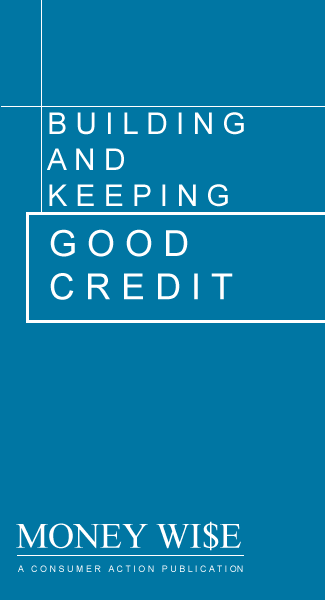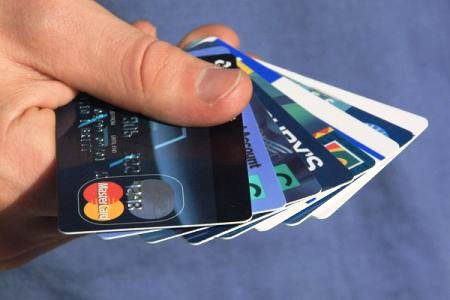
Bank and Banking Related Fraud
Cheque Fraud / Check Fraud
Check fraud accounts for yearly losses of at least $815 million, more than twelve times the $65 million taken in bank robberies annually.
Check Kiting
Cheque kiting is when in-transit or non-existent cash is recorded in more than one bank account. The crime usually occurs when a bank pays on an unfunded deposit.
For example, a bum check is deposited into an account. Before the cash is collected by the bank, a check is written against the same account and deposited into a second account, or cashed. The increased use of wire transfers allows this type of scheme to be perpetrated very quickly.
Uninsured Deposits
At least two companies solicit uninsured deposits on the Internet. Netware International advertises itself as a "Constitutional" bank and FocusInternational.com, Ltd., is a West Indies company seeking deposits for an unidentified bank.
They lure depositors by offering high rates of interest, or promising offshore secrecy. Neither company is authorized, supervised, or regulated by any U.S. State or Federal bank or financial institutions regulator. Deposits in these companies do not have the protection of the Federal Deposit Insurance Corporation or any other state or federal deposit insurance.
continue QuickTour
Credit Card Theft and Fraud
One con, while in jail serving a state prison term for credit-card theft, actually perpetrated yet another credit card scam over a seven month period, using a technique that allowed him to hide the fact that he was calling from jail.
He would start off by calling the county-run nursing home saying he was a Bell Atlantic technician and that he needed the person to dial a special code to test the lines. When the person pressed the requested numbers, he would be connected to an outside line that he used to call businesses.
When he called the businesses, he would tell them he was a credit-card representative and that he needed customers' names and phone numbers to verify recent transactions. With that information he then called the cardholders and posed as a credit company employee, saying he needed personal information to check for fraud.
With this personal information and the credit-card numbers, he then requested and received more credit cards with which he made about $25,000 worth of purchases of such things as sports memorabilia, flowers, and gift certificates. He also bought calling cards so he could continue the scam.
Some of the items were given to other inmates in exchange for helping with the fraud while other items were shipped to friends to be held for him until he got out of jail.
Duplication of Card Information - Skimming Scams
Credit card "double scan" machines can copy info from the magnetic strip of your card and create a new duplicate card for which your account will be billed for any purchases. Try to keep your card in sight when possible to avoid this problem.
While card issuers have fraud detection software which picks up unusual spending patterns, smaller purchase "skimming" can be subtle and prolonged, compared to the flurry of spending when a card is stolen outright.
Keep a record of your account numbers, their expiration dates, and the phone number and address of each company in a secure place.
Void incorrect receipts and destroy carbons.
Save receipts to compare with billing statements.
Open bills promptly and report any questionable charges promptly and also in writing to the card issuer.
If you realize they've been lost or stolen, immediately call the issuer. Many companies have toll-free numbers and 24-hour service to deal with such emergencies.
By law, once you report the loss or theft, you have no further responsibility for unauthorized charges. In any event, your maximum liability under federal law is $50 per card. If you suspect fraud, you may be asked to sign a statement under oath that you did not make the purchases in question.
Booster Checks
A booster check is a non-sufficient fund (NSF) check used to make a payment to a credit card account. One group used "booster checks" to "bust out" legitimate credit cards. They used credit card "convenience checks" issued by the banks and credit card companies to inflate their credit card limits; or to "bust out" the credit card to double or triple the established line of credit.
Because banking laws require financial institutions to immediately post credit payments even before the check has been cleared, they would use the window of time between the posting of the credit card payment and the discovery of the bad check to go on a spending spree and purchase, among other things, large amounts of gold coins from legitimate coin vendors.
They would also go to store owners who knowingly aided the bust out scheme, who would "swipe" the credit cards through point-of-sale credit card terminals located at their businesses. While these transactions would appear to be legitimate, no merchandise would actually be exchanged.
Once a credit card company transfers funds to a store owner's bank account, a collusive merchant is able to dispense funds from the busted out credit card. The merchants in this case allegedly issued kickback checks to the card holder for the amount of the transaction, and they would then receive a kickback from the card holder which would amount to a small percentage of the transaction.
The Secret Service estimates the total loss in this one case is between $10 million and $15 million.
Falsification of Loan Applications
While scheming to defraud four banks and a credit union, one con opened checking and savings accounts using a false name and a fraudulently obtained new social security number. He then applied for seven loans for the stated purpose of financing the purchase of motor vehicles.
He also submitted false documents concerning his employment and income, including fake tax returns. By producing fictitious records including motor vehicle appraisals, insurance documents and invoices he obtained approximately $380,000 in loans for the purchase of a 1976 Rolls-Royce Silver Shadow, a 1978 Ferrari model 308 GTS convertible, a 1992 Mercedes-Benz model 300SE, a 1995 Mercedes-Benz model SL320 and a 1994 Mercedes-Benz model 500SL.
He also applied for and was issued multiple credit cards and charge cards. In just seven months he ran up charges leading to losses of at least $460,000.
For example, he used an American Express account to pay $27,000 towards the purchase of an item of jewelry, used an MasterCard to place a $5,000 down payment towards the purchase of a 1955 Mercedes-Benz 300SL Gullwing with a purchase price of $203,000 and a 1964 Ferrari 250GT Lusso convertible with a purchase price of $153,000, and then used the American Express account to pay $320,000 towards the purchase of these two antique automobiles. He also used various VISA and MasterCard accounts to obtain substantial cash advances and used the American Express account to pay $93,600 towards the purchase of a Patek Philippe Moon Phase watch with a purchase price of $95,600.
Laxity of Enforcement
One of the problems with enforcing bank fraud laws is that it is often relegated to a low priority, or ignored altogether, because the activity can span several jurisdictions, involve many unidentified subjects, is non-violent and usually there are few leads.
Normally, the typical bank robber nets $700 and is caught within 24 hours, yet the average check scam involves losses of more than $2,000, the perpetrators are seldom caught, and there are more than one hundred times as many cases as bank robberies. Out of 10,000 cases the losses exceeded $60 million dollars.
Many bank fraud suspects are able to elude arrest by furnishing false identification when cashing stolen, forged, or counterfeited checks. One effort to stop this crime is the "Check Print" program which requires non-bank customers to provide a thumb print, using a clear solution, on the negotiated check for identification purposes. With this positive identification, it has been much easier to identify, arrest, and successfully prosecute bank fraud scams.
Check Security Features
Check manufacturers help deter check fraud by making checks difficult to copy, alter, or counterfeit. Some useful security measures include:
Watermarks. Watermarks are made by applying different degrees of pressure during the paper manufacturing process. Most watermarks make subtle designs on the front and back of the checks. These marks are not easily visible and can be seen only when they are held up to light at a 45-degree angle. This offers protection from counterfeiting, because copiers and scanners generally cannot copy watermarks accurately.
Copy Void Pantograph. Pantographs are patented designs in the background pattern of checks. When photocopied, the pattern changes and the word "VOID" appears, making the copy nonnegotiable.
Chemical Voids Chemical voids involve treating check paper in a manner that is not detectable until eradicator chemicals contact the paper. When the chemicals are applied, the treatment causes the word "VOID" to appear, making the item non-negotiable.
High Resolution Microprinting. High-resolution microprinting is very small printing, typically used for the signature line of a check or around the border, in what appears to be a line or pattern to the naked eye. When magnified, the line or pattern contains a series of words that run together or become totally illegible if the check has been photocopied or desktop scanned.
Three-dimensional Reflective Holostripe. A holostripe is a metallic stripe that contains one or more holograms, similar to those on credit cards. Those items are difficult to forge, scan, or reproduce, because they are produced by a sophisticated, laser-based etching process.
Security Inks Security inks react with common eradication chemicals. These inks reduce a forger's ability to modify the printed dollar amount or alter the designated payee, because when solvents are applied, a chemical reaction with the security ink distorts the appearance of the check.
Cooperation between Check Manufacturers and Financial Institutions
Participating financial institutions can report all checking accounts "closed for cause" to a central database, called ChexSystems. This program prevents people, who have outstanding checks due to retailers, from opening new accounts.
You can use this information before opening new accounts to spot repeat offenders and you can also use MICR information from a check presented with the applicant's drivers license number to check the SCAN file for any previous fraudulent account activity.










